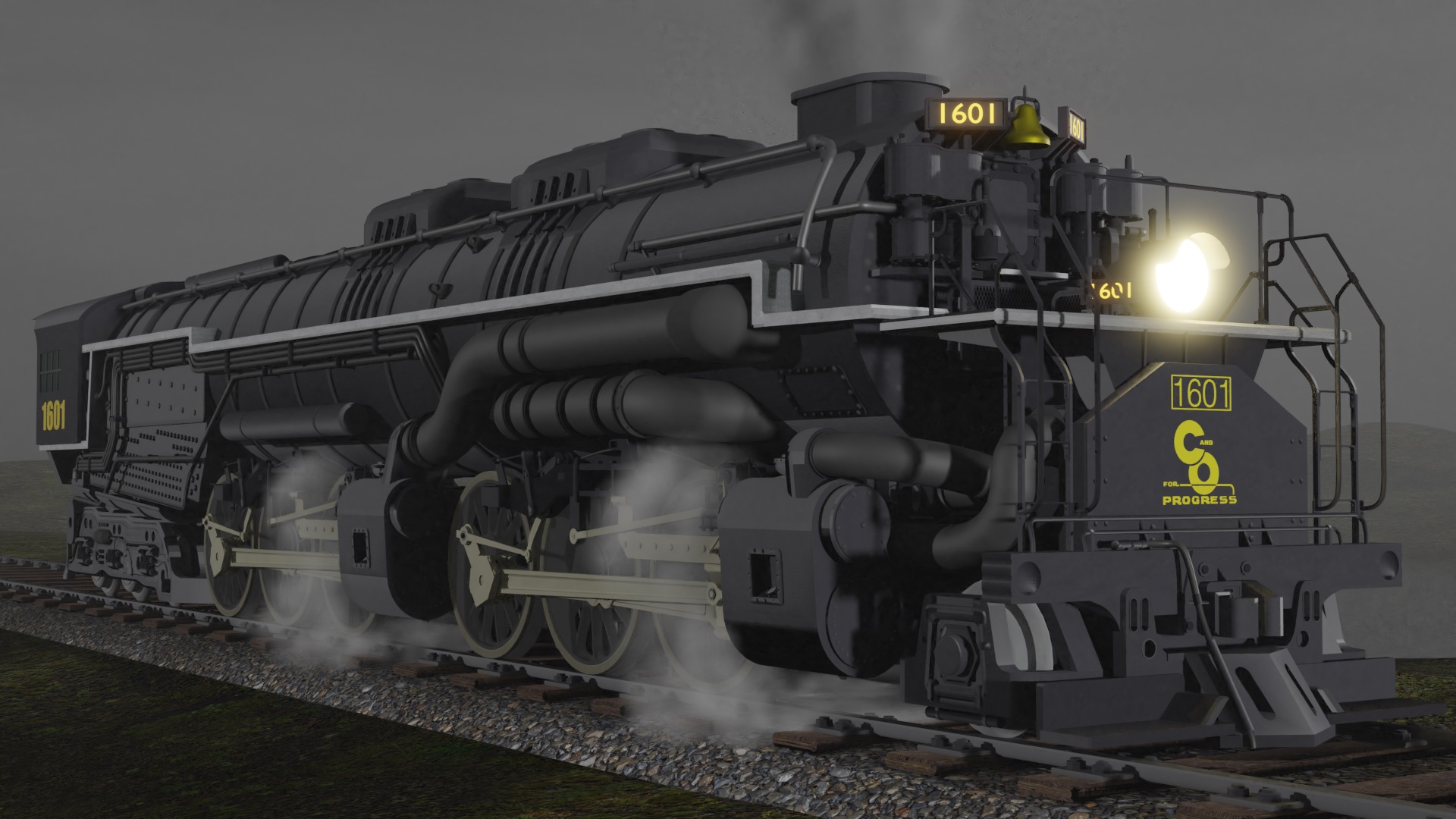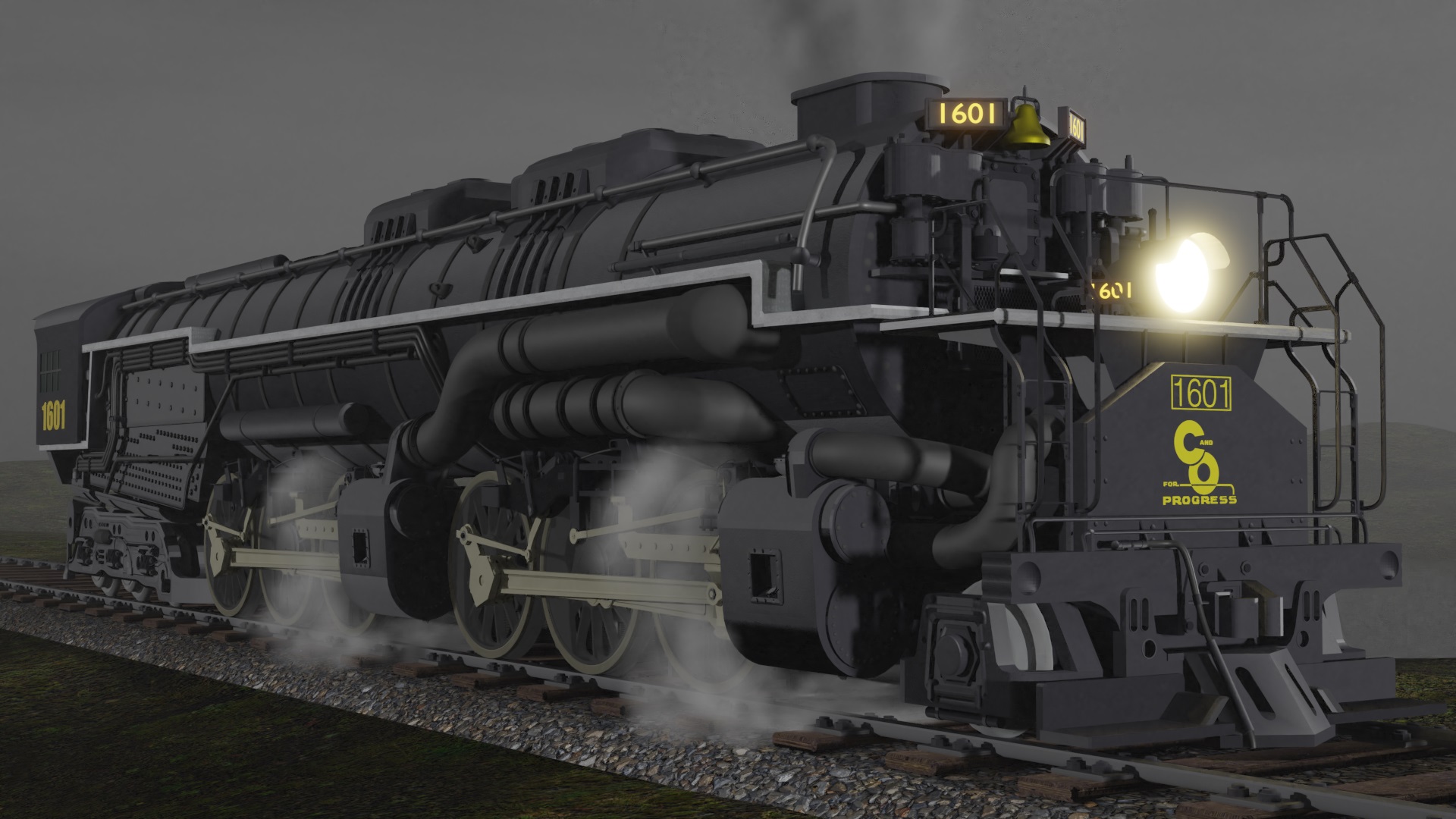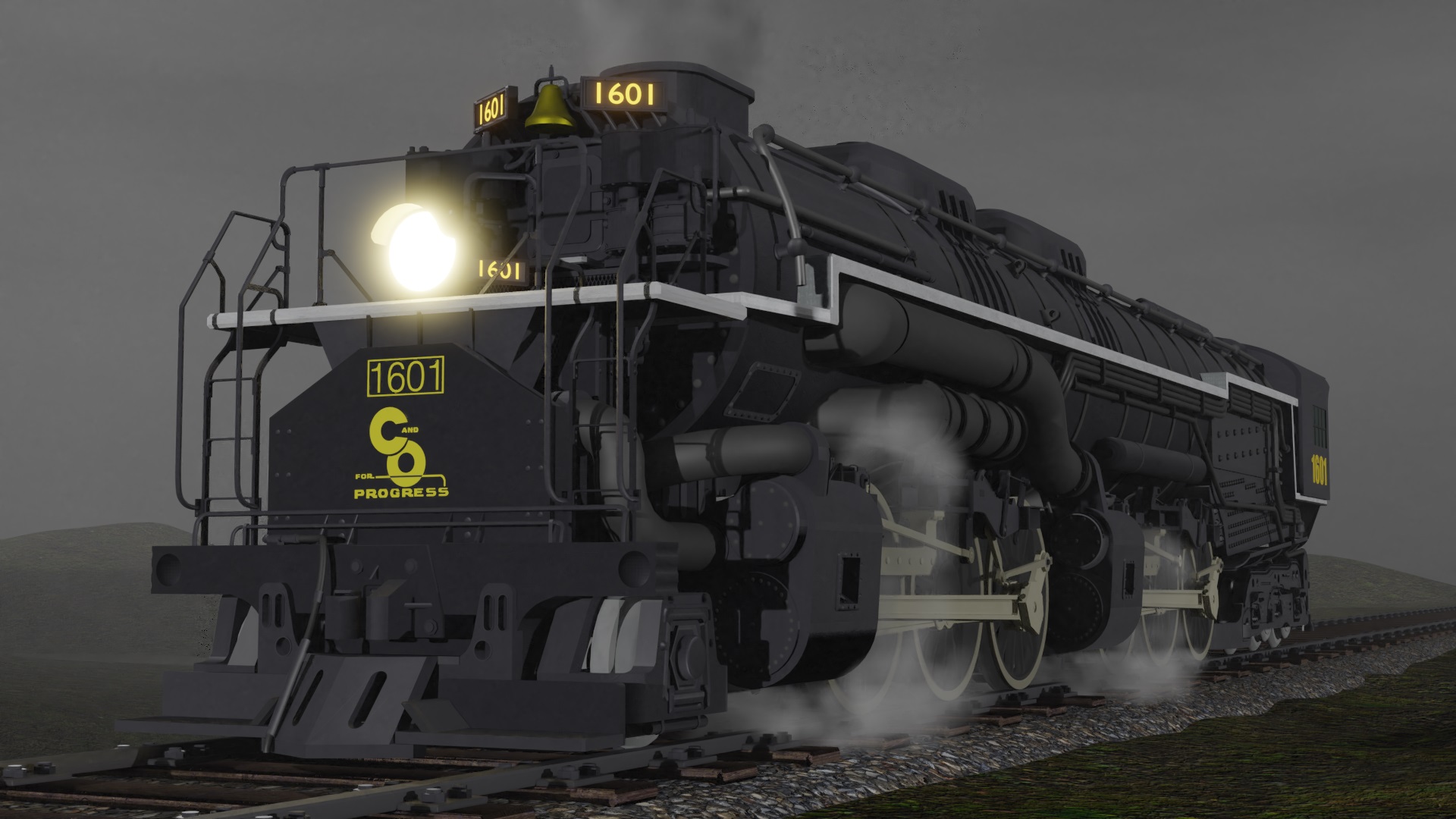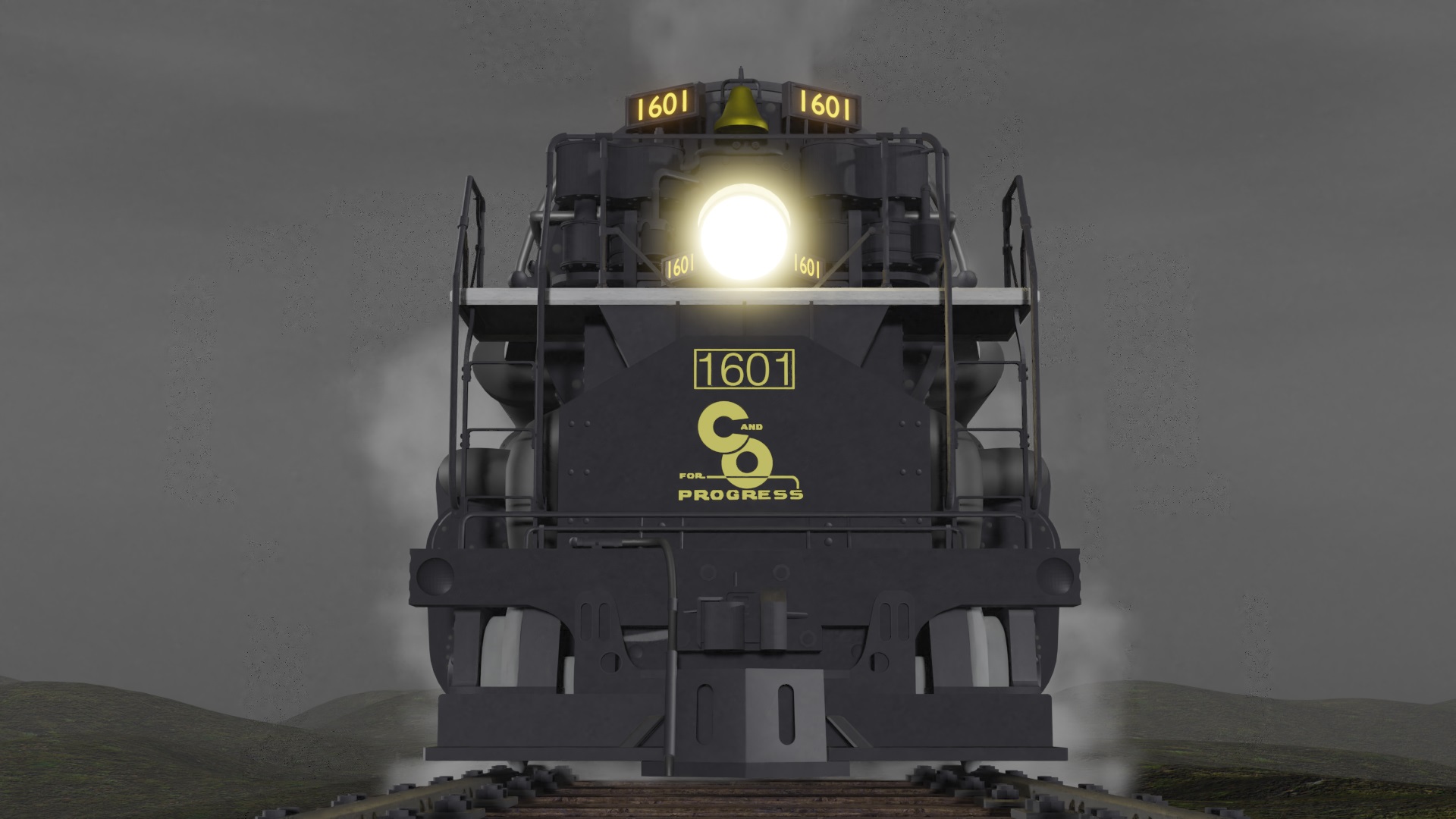Chesapeake & Ohio Allegheny Steam Locomotive
The Chesapeake and Ohio H-8 was a class of 60 2-6-6-6 steam locomotives built by the Lima Locomotive Works in Lima, Ohio between 1941 and 1948, operating until the mid 1950s. The locomotives were among the most powerful steam locomotives ever built and hauled fast, heavy freight trains for the railroad. Only two were preserved; Nos. 1601 and 1604. In 1939, the C&O was in the market for new locomotive power for its coal traffic. The railroad already had 40 Lima-built 2-10-4 T-1s from 1930 which ran across the largely level trackage in Ohio, while 45 2-8-8-2 H-7s dating back to 1924-1926 plodded away in mountainous territories of West Virginia and Virginia. Seemingly poised to order more Superpower T-1s, Norfolk & Western's success with their home-built Class A 2-6-6-4 prompted the C&O and Lima to consider a more modern articulated design. Design engineers at Lima argued that expanding the 4-wheeled trailing truck design to a 6-wheel design would permit an even larger firebox, leading to more steaming capability and, by extension, power. Thus was born the 2-6-6-6 wheel arrangement.
Having been sold on the Superpower philosophy through its experience with the T-1, the C&O went on to order 60 of the 2-6-6-6 type locomotives, which they designated the H-8, in 5 batches. The first 4 orders encompassed the first 45 locomotives and were delivered between 1941 and 1944, with the final order for 15 locomotives arriving in 1948. Cost per locomotive varied between individual orders, with the first order coming in around $230,600 per unit and the final order costing the C&O $392,500 per unit. Purchased with the intention of replacing the older H-7s on the New River and Alleghany subdivisions, the class received the nickname of "Allegheny".
Once on property, the H-8s were put to use on the railroad's heavy coal trains on both the flatlands of Ohio, supplementing the T-1s, and in the mountains of Virginia and West Virginia, replacing the H-7s which were then relegated to pusher service. Other assignments over the years included manifest freight and the occasional troop or passenger train. With the advent of dieselization in the early 1950s, retirement of the class started in 1952 and ran until the last fire was dropped in 1956.
This model might be useful for making videos regarding railroad history featuring this particular locomotive, as well as anyone who loves trains.




